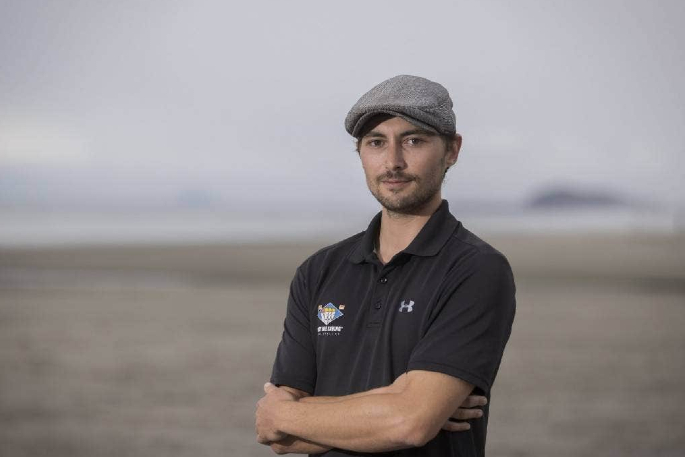A senior Surf Lifesaving manager has warned beachgoers to consider leaving the pooch at home – as it could save their lives.
Eastern region Surf Lifesaving manager Chaz Gibbons-Campbell has had to warn seven different beach goers over the past two days at Mt Maunganui that they should be swimming between the flags.
He says bylaws there mean dogs are barred from the flagged area on the beach, 'and that's why they weren't in between the flags”.
He says some of the people – with children in the water – were found 'phone in one hand, coffee in the other”.
'People are not aware of their surroundings and rip currents,” he says.
'Some were well outside [the flags]. They have no idea they're in a rip current.”
Gibbons-Campbell says they conducted 120 rescues on just Wednesday alone, with 83 at Mt Maunganui.
He says that on Thursday they rescued seven people, assisted a further nine, administered minor first aid on nine occasions and racked up 822 hours worked.
He also says he was well aware there are currently two great white sharks, Daisy and Takami, in the Bowentown area – and that he backed a Coroner's call to use drones.
The two sharks had been tagged by shark expert Dr Riley Elliott, and their locations can be tracked via his Sustainable Oceans Society website.
Both Takami - a 2.2m, three-year-old female - and Daisy - a 2.75m, four-year-old female - have recently been tagged at Bowentown harbour.
However, he says that while drone use was 'something that's on our radar”, they were still in the process of training for their use.

Surf Lifesaving veteran Chaz Gibbons-Campbell says even he finds it hard to spot rips sometimes, and that swimming between the flags was good advice. Photo: Stuff.
Using drones to spot great white sharks was recommended by Coroner Michael Robb in his report into the death of Kaelah Marlow, who died on January 7, 2021, at Waihī Beach.
Robb recommended 'drones be utilised by or for the benefit of surf lifeguards, where possible, to assist in the monitoring of ocean waters in and around flagged areas”.
Meanwhile, Gibbons-Campbell says there were a number of measures beach goers could take to make sure they stay safe in the water, including always swimming between the flags.
He also recommended 'five or ten minutes just watching the water before you go in”.
He admitted that even as a 13-year veteran it was sometimes hard to spot rip currents, but says some signs included darker water with either no waves, or criss-crossed waves.
He says debris floating out to sea could be a sign of a rip, too, and advised looking for waters breaking evenly on a sand bar as a safer place.
He also says anyone swimming with children should always ensure they remained within arms reach.
He also advised against swimming near anyone fishing, and called on those fishing themselves not to discard fish guts and remains back into the water.
He also advised checking Safeswim.org.nz which includes details of lifeguards on duty and hazards.
'If it's really dangerous there'll be a rad flag,” he said.



0 comments
Leave a Comment
You must be logged in to make a comment.